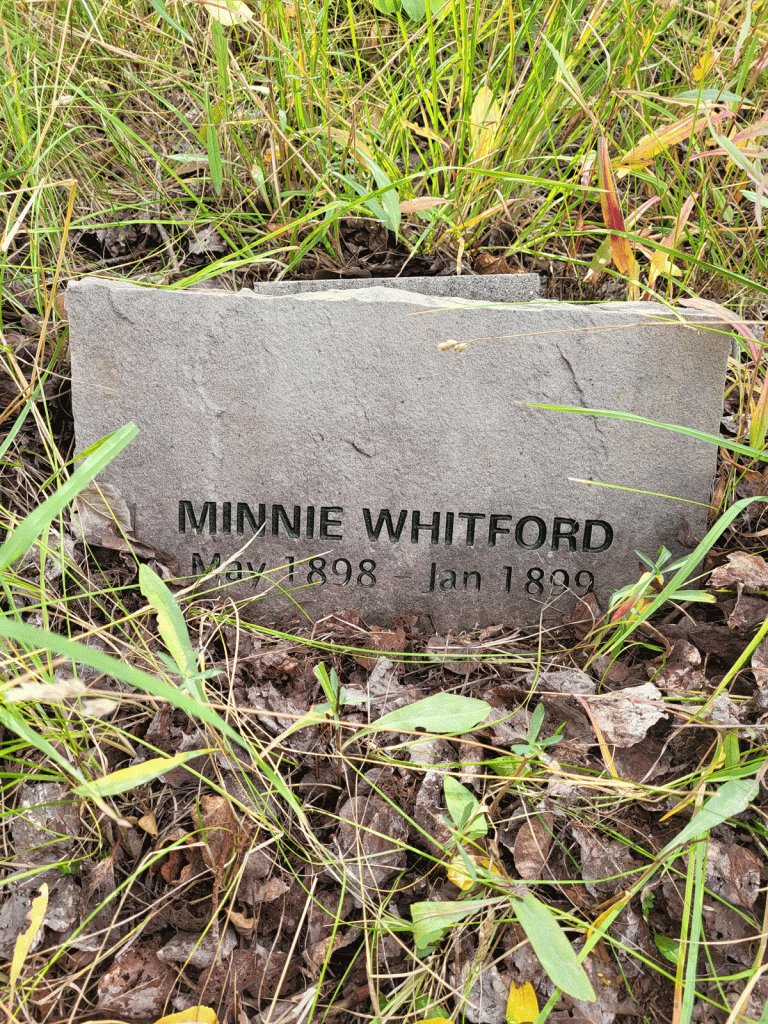When the Glenwood was established in 1885, the five acres were divided into blocks that were assigned to each of the fraternal organizations. Within the blocks, plots were given to the organizations’ members and their families. In total, the Glenwood could accommodate 5000 burials across the grounds, but only 949 individuals were buried in the cemetery during its years of use.
As mining declined in Park City and the fraternal organizations’ lodges disbanded, the Cemetery fell into an era of disrepair and even vandalism. Many wooden headstones decayed with the neglect. Eventually, these headstones were replaced by the Glenwood Cemetery Association (GCA) who took over the Cemetery’s care in the 1980s.
Today, anyone searching for a grave in the Glenwood can use the “Book of the Dead,” located at the Cemetery and in the Museum’s Research Library, to find the square, block, and plot combination of any burial. The Book is searchable by Name, Date of Death, or Fraternal Organization.
On August 25, 2022, a visitor to the Glenwood Cemetery discovered a headstone lying in the grass by the brook and alerted staff at the Park City Museum. Although finding a headstone in a cemetery should not be all that alarming, several clues hinted that it was out of place and that something was amiss…
The headstone discovered beside the brook was for a Minnie E. Shitford, born May 1898 and died January 1899. Based on the stone’s material and carving style, it appears to be a GCA replacement headstone. Because many plots remain unused, large swathes of the northern and eastern sides of the Cemetery lack burials, including the areas surrounding the brook where this headstone was discovered. Upon consulting the Book, another glaring error was found—an unfortunate typo in Minnie E. Whitford’s last name.

Photograph taken by Lexy Hartford.
Minnie Whitford was born to William and Kate Whitford. William had married Kate Paffen in Park City on September 21, 1895 when Kate was eighteen. Minnie was born several years later, lived less than a year, and died on January 17, 1899 of a bowel hemorrhage. She was buried at the Glenwood. It is unclear what happened to William, but Kate appears to have remarried in 1905 to a man named James Allen. Five years later, Kate died in a Salt Lake City hospital in childbirth at the age of thirty-three.
Thankfully, the real headstone for Minnie E. Whitford was discovered in place above her plot and with the correct spelling. According to the Book, Minnie’s original gravestone was replaced by the GCA in 2009. However, some mysteries remain surrounding the brook headstone. Who made the brook headstone and when? How did it end up by the brook? More research in the archives and oral histories of the Museum may clarify this.

Photograph taken by Lexy Hartford.
More mysteries within the Cemetery are likely to arise still, since records of the era, and even the gravestones, were not always complete. For example, the headstone for Nels Blomgren (Plot 1-3-31) lists Nels and his son, Andrew, but not his daughter Mary who—we know from other sources—is also buried there. As preservation continues, new mysteries may be unearthed for us to solve.
If this mystery intrigued you, you can learn about how archaeologists are attempting to solve a much older mystery from Pre-Columbian Mexico, Guatemala, and Honduras at the Museum’s lecture on Tuesday, October 11 at the Education and Collection Center at 2079 Sidewinder Drive. Register here.